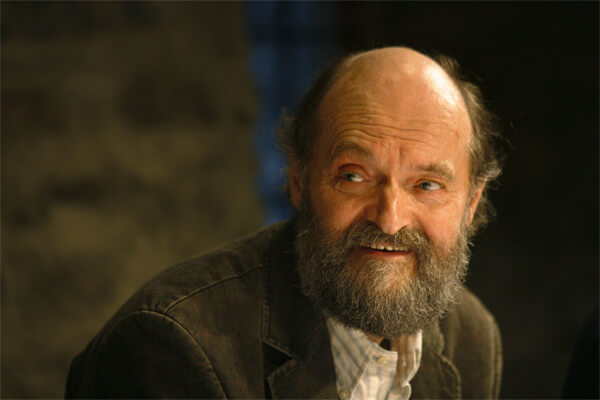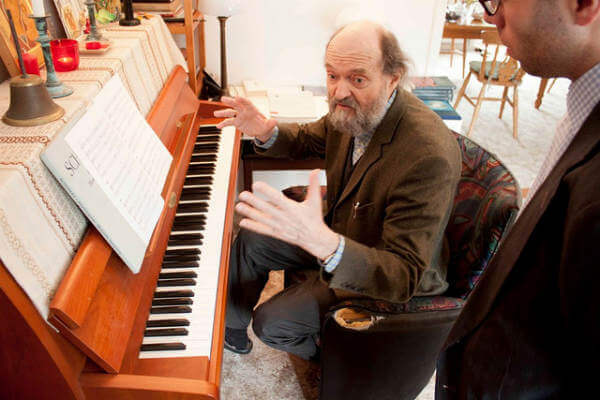

Arvo Pärt – Photo by Peeter Langovits
Part of a larger festival of Pärt’s music in Washington D.C. and New York, the Carnegie Hall concert on May 31, 2014 brought the Estonian Philharmonic Chamber Choir, the Tallinn Chamber Orchestra, and conductor Tõnu Kaljuste from their home country under the auspices of The Arvo Pärt Project at St. Vladimir’s Seminary. The program balanced older, more famous works of Pärt with more recent compositions, favoring larger arrangements suitable to the chamber orchestra. Stern Auditorium was packed, and I soon spotted Pärt several rows ahead of me, smiling and unassuming, flanked by the interesting assortment of Björk, Antony of Antony and the Johnsons, Christian Orthodox priests in full regalia, and Keanu Reeves.
The first two pieces on the program, Fratres and Cantus in Memoriam Benjamin Britten, represented Pärt’s early works written in tintinnabuli style, written after the composer’s major stylistic breakthrough. In the 1960’s, Pärt experimented widely with compositional styles, roving from serial music to aleatoric procedures to collage. Then came eight years of silence, during which time Pärt filled notebook after notebook with single melodic lines, grappling after new forms of musical expression in an obsessive study of Gregorian chant and the expressive possibilities of monody. Pärt emerged after this period of near-silence in 1976 with “Für Alina,” the first of his works in tintinnabuli style, where a modal melodic line marches against a voice which arpeggiates a triad, derived from the melody but, crucially, not always in the same mode as the melody. This system for structuring compositional ideas allows for unexpected, prismatic shifts between consonance and dissonance, a sonic attribute that Pärt has identified as a metaphor for intertwined consolation and suffering.

Arvo Pärt explaining the dynamics of Kanon Pokajanen, with Nicholas Reees
The program also featured the tintinnabuli work Te Deum (1985). As with the melodies in Fratres and Cantus in Memoriam Benjamin Britten, the melodic material in Te Deum explores register in a series of thoughtful, incomplete gestures, which gradually fill out their spectrum via additive procedures. To listen to these works is to hear a melody in the act of becoming, a kind of raw, ontological approach to melody formation. In Te Deum the prepared piano has an austere part, and the pianist, Marrit Gerretz-Traksmann, fulfilled the essential role of rendering a single chord as an utterance, a devastating cry. The key structural motion in this piece resides in three climatic moves to major, shifts that come across as surprisingly disorienting, like the spots that appear in one’s eyes after glancing into the sun. The droning wind harp, handled as a processed tape part, provides a soft layer of noise that extends the lower register of the piece and functions as an extension of the decay on the piano, a gravelly underbelly to the ensemble.
Also performed was the more recent Salve Regina (2001, arr. 2011 for choir, celesta, and strings), where the ethereal timbre created by coupling celeste and violin in stratospheric registers seems quintessentially Pärt. In the program notes Pärt describes the piece as “slowly turning and becoming more and more concentrated and grave until it reaches the deepest point.” But the end of the piece actually ascends, almost vaporizes. This paradox, where “deepest” and “highest” collapse into an indistinguishable field of spiritual values, might well be the essence of Pärt’s work. His return to monody and the sacred music of the Middle Ages is not a pragmatic return to historical sources to solve a compositional problem, nor is it an erudite refraction of the past as, say, Stravinsky accomplishes in his Neoclassical works. Instead he brings a raw, attentive gaze to early music, transforming basic manipulations of melodic line and register into fervent and extraordinary sonic journeys.
